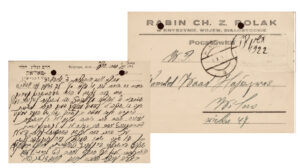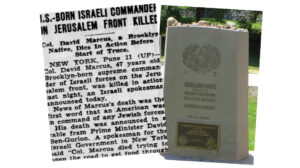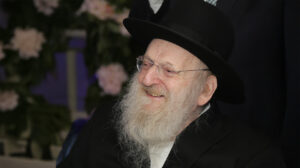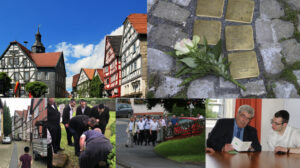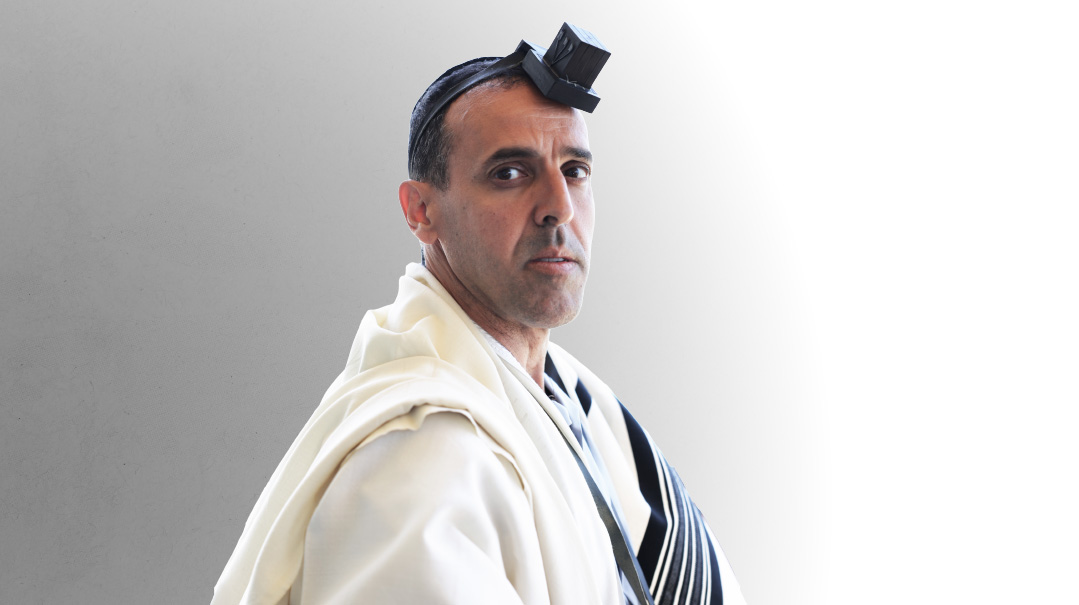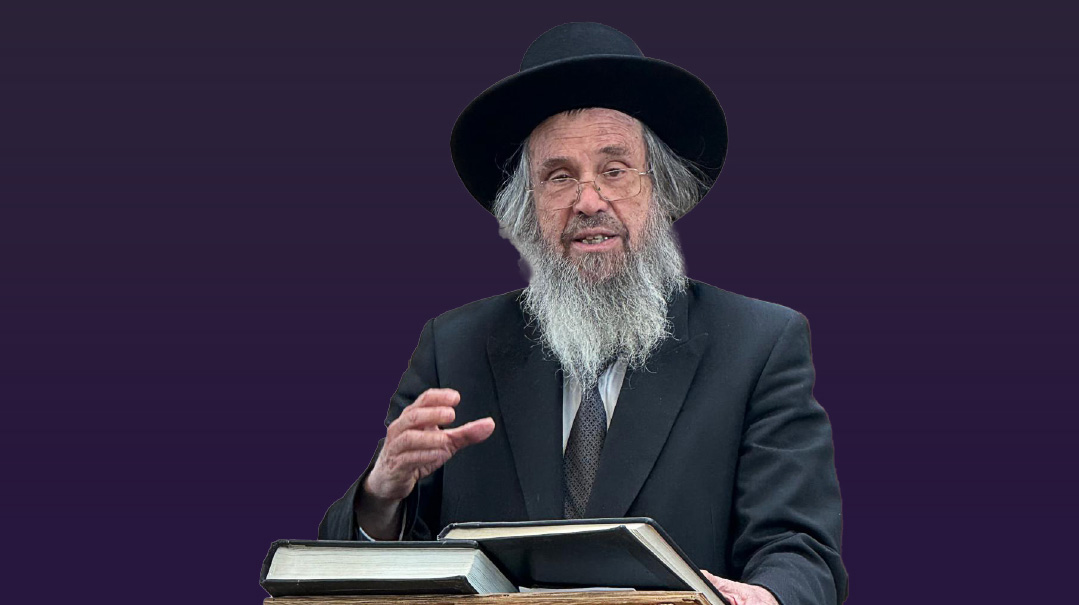Why are you Running?

A century after the Alter of Novardok’s passing, his vision remains a living legacy
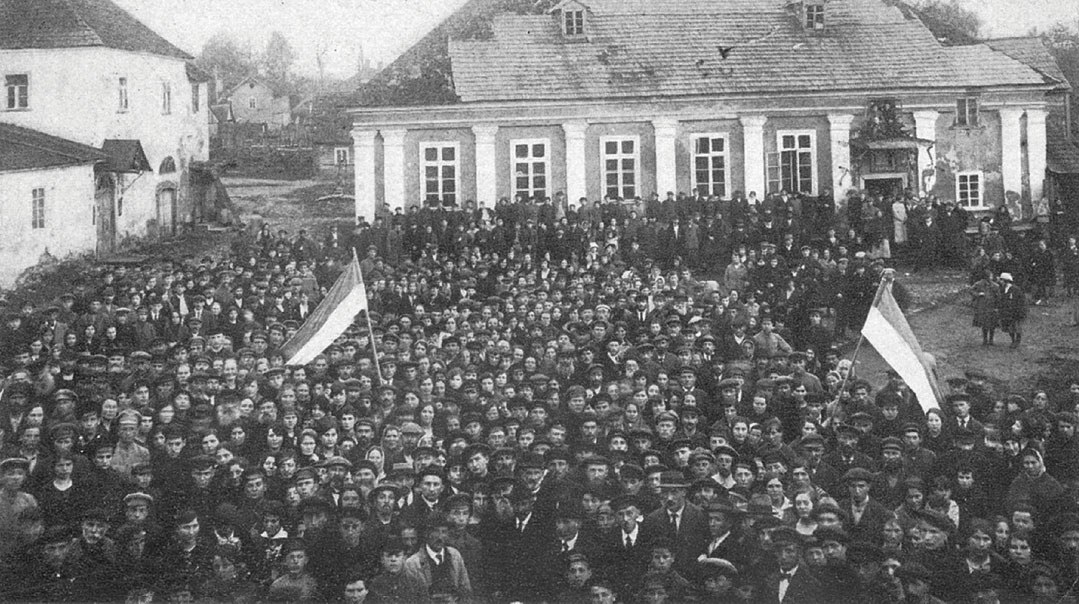
Photos: Mishpacha archives
A hundred years is a long time by any measure, and this past Kislev marked the passage of a century since a monumental master of mussar, Rav Yosef Yozel Hurwitz ztz”l — known for posterity as the Alter of Novardok — left the world, having died as he lived, selflessly tending to ailing students during a 1919 typhus outbreak in Kiev.
The Jewish world he knew, wracked by war and poverty and fragmented by the heresies of Communism and Haskalah, is long gone. And yet, a century later, the Alter still lives.
His worldview has been perpetuated in places like France, where a prime disciple, Rav Gershon Liebman ztz”l, founded a veritable empire of mussar that continues to this day, and in the United States, where Rav Yechiel Perr, who heads Far Rockaway’s Yeshiva Derech Ayson, has long been a leading exponent of the teachings of the mussar movement generally and of its Novardok school in particular.
Through Rabbi Perr’s rebbetzin, who is the Alter’s great-granddaughter, Rabbi Perr became his scion, too. And as we sit in his office a few days after the Alter’s hundredth yahrtzeit on the 17th of Kislev, he notes a seeming disparity. “Rav Yitzchok Orlansky, who was the Alter’s talmid, told me that at age 18, he was present at a Shabbos Shuvah derashah the Alter delivered in Petersburg. It lasted four hours, and, he recalled, ‘Mir hoben azoi gelacht az mir hoben gehalten bei di zeiten — we laughed so much we had to hold our sides.’ I’ve also heard the Alter described as someone who was lo pasak milsa d’bedichusa mipumei — he always had a humorous line at the ready, and that he was such a baal regesh that he’d become frozen to the spot, transfixed, when he heard music playing.”
Yet the Alter also exemplified extremism, teaching that one must go all out in breaking bad middos, in rejecting the emptiness of materialism and honor-seeking, and in developing trust in Hashem. It’s how he lived and what he expected of his students. “Az m’kehn nit ariber, muz mehn ariber — When one can’t go above, one must go above” was just one of his many sayings that roused talmidim to overcome adversity — whether posed by one’s own nature or by Russian Communists — and indeed, to rise above.
To convey a sense of that intensive, rarified Novardoker atmosphere of striving, Rabbi Perr mentions a memory that Rabbi Elya Jurkanski, a longtime rebbi in Brooklyn’s Mirrer Yeshiva, once shared. At the time, he was a 12-year-old talmid in the central Novardoker yeshivah in Bialystok: “We learned all day, and there wasn’t anything to eat,” Rabbi Jurkanski remembers. “One night, I’d gone to sleep on a bench in the beis medrash, and my rosh havaad woke me up to tell me, ‘Elya, I found an apple for you.’
“I said, ‘I don’t need food — I only need ruchniyus.’ I’m telling you this so you should understand what it was like there.”
So, Rabbi Perr asks, is it a contradiction in terms to portray the Alter as exuding joie de vivre, yet possessing an intense drive to climb ever higher up the rungs of the spiritual? “No,” he says in answer to his own question. “I once asked my wife’s zeide, Rav Avraham Yafen, who was the Alter’s son-in-law and successor, whether the uncompromising views the Alter propounded in his sefer were a product of his personality. He replied that in temperament the Alter was like everyone else, but he believed that to be effective, it’s necessary to be extreme rather than middle-of-the-road. I later found that the Chazon Ish, too, wrote an essay in which he speaks of the obligation to educate our youth to be extreme because, he says, without extremism, a person does not feel the vigor and the beauty of what he’s doing. He acknowledges that this will have negative results because people won’t know where to draw the line, but that’s nevertheless how we have to be mechanech.
“I regret not discussing with Rav Avraham Yafen whether it was the conditions of the times that made extremism so necessary,” Rabbi Perr continues. “It was, after all, an era when Communism and Haskalah were ascendant, and all everyone spoke about was the dawning of a new utopian world where Jews would finally be treated as human beings. The Alter was very concerned that the Haskalah was simply walking away with the youth.”
It’s also important to realize, adds Rabbi Perr, that all mussar is extreme in its essence, demanding high standards of ethical excellence. Kelm, for example, may be regarded as more moderate than Novardok, but only in relative terms.
The Chevron mashgiach, Rav Yehuda Leib Chasman, who was a product of Kelm, once spoke in the Slabodka yeshivah and said, “There are storekeepers in Kelm who are on a higher madreigah than you are.”
He knew of what he spoke, because he and his wife had once operated a store in Kelm that sold flour. Once, in the middle of the business day, he went to speak with his rebbi, Rav Simcha Zissel Ziv, the Alter of Kelm. During the conversation, Rav Leib put his hand on his rebbi’s arm. When they finished, Rav Simcha Zissel remarked, “Your hand is so floury,” and began wiping that sleeve with the other one. But looking at his hand, Rav Leib saw it was clean — and understood Rav Simcha Zissel was telling him that his involvement in business had gone over the line. Rather than reenter the store, he sent his wife a note that read, “We’re selling.”
Rabbi Perr’s father-in-law, Rav Yehuda Leib Nekritz, once shared with him an insight of Rav Yitzchok Valdshein, known in Novardok circles as “the Shershever.” A grandson-in-law of the Alter, it was he who transcribed the latter’s mussar lectures to produce his masterwork, Madreigas Ha’Adam. “Mussar,” the Shershever said, “is understanding everything as it really is.”
Once we understand mussar in that way, as a very down-to-earth, very real way to look at life, Rabbi Perr observes, we can begin to see the value of the extreme approach, because it too partakes of those attributes. “To say that if you’re not going to change now, you’re never going to change — that’s extreme, but also very realistic. The idea that a person can’t just go on fooling himself with compromises and half-measures, but must instead ingrain change in himself with specific actions designed to effect change — in Novardok, they called them pe’ulos — that’s real, it’s how life really is.”
No Deterrents
Although Rav Yosef Yozel Hurwitz’s later life was unconventional and filled with dramatic turns, it didn’t begin that way. His early years were like those of many gedolei Torah we read about: Born circa 1850, he and three brothers and four sisters were raised in Kortuvyan, a town in the Kovno region of Lithuania, where their father, Rav Shlomo, served as rav. Tutored privately by his father, a great talmid chacham, Yosef Yozel’s brilliance was apparent early, and by age 16, he was delivering shiurim in the town’s beis medrash; a year later, he had already authored a work on the Ketzos Hachoshen.
Soon, however, his tranquil life took a sharp, tumultuous turn. At age 18, he became engaged, but before the wedding, his father-in-law died, thrusting the responsibility of supporting not only his wife but his mother-in-law, and her eight children too, onto the young chassan’s tender shoulders. His business interests flourished, enabling him to provide a comfortable life for his family, while he continued to give shiurim.
His business dealings brought him frequently to visit Memel, on the Lithuanian-German border, where Rav Yisrael Salanter, founder of the Mussar Movement, then lived. On one such visit to the city, the two had a fateful encounter: Rav Yisrael was at the train station in Memel when hundreds of travelers poured forth from an arriving train. Among them, his eyes were drawn to one passenger who stood out from the rest, a red-bearded young man hurrying on his way with packages in his arms.
Rav Yisrael approached him and asked, “Where are you running, young man?”
Recognizing his questioner as the great Rav Yisrael, he put down his things and replied, “To make a parnassah.”
“For what do you need parnassah?”
“I have at home a wife and a mother-in-law and her eight children. One needs to have with what to live.”
Said Rav Yisrael to him, “And I thought one must have with what to die.”
Those stark words pierced Rav Yosef Yozel to the core, and he resolved to begin attending Rav Yisrael’s shiurim on Mesillas Yesharim in Memel’s Great Synagogue. After listening to 13 such lectures, Rav Yosef Yozel made a momentous decision: At age 27, he closed his business, putting aside a significant sum toward his family’s needs, and joined such leading students of Rav Yisrael as Rav Yitzchok Blazer, Rav Naftali Amsterdam, and Rav Avraham Shenker, in the famed Kovno Kollel, where he spent 18-hour days in Torah study.
He eventually brought his wife and young son to live in the Kovno suburb of Slabodka, but only a short time later, tragedy struck when she died in childbirth. Refusing to allow this great blow to depress or deter him, Rav Yosef Yozel decided to redouble his focus on avodas Hashem, and thus began a period of many years in which he largely closed himself off from the world in order to work on his spiritual growth. Even after his remarriage, he continued to live in relative isolation, returning home for each Shabbos.
There were those who criticized his chosen path as a chillul Hashem, but the Alter of Kelm, Rav Simcha Zissel Ziv, came to his defense, saying he failed to understand how it could be a chillul Hashem for a Jew to seclude himself out of a pure desire to learn and serve Hashem. Maskilim of the time also saw him as a threat to their worldview and attempted to frame him on bogus charges of counterfeiting, but their plot was foiled.
Rav Yosef Yozel visited Rav Simcha Zissel often, with the two debating at length the merits of perishus, Rav Simcha Zissel contending that the challenges of the time called for active involvement on behalf of Klal Yisrael rather than withdrawal into oneself. Eventually, Rav Yosef Yozel indeed emerged onto the communal scene, aflame with a revolutionary fervor to transform the face of the Jewish world.
He set about establishing a yeshivah gedolah in the major Jewish community of Novardok, with the financial support from local balabatim and backing of the town’s venerated rav and author of the famed halachic work Aruch Hashulchan, Rav Yechiel Michel Epstein. But soon after the yeshivah’s founding, a major chasm opened up in the Torah world over whether mussar had a place in the yeshivos. With the support of Rav Epstein and the local lay leaders, the Novardok yeshivah weathered the storm.
The yeshivah flourished, gaining a reputation as one of Europe’s great academies of Torah and attracting upwards of 300 talmidim, among them future leaders like Rav Yechezkel Abramsky and Rav Yosef Kahaneman. It also became a launching pad for the Alter to found a series of smaller yeshivos across Russia in places like Mogilev, Podolsk, Kaminetz, Berditchev, Nikolaev, Minsk, and Babruysk. These yeshivos constituted a cohesive Novardoker educational network, with the Alter traveling regularly among them to guide their growth.
With the advent of World War I in 1914, Novardok entered a turbulent new era. The Alter moved the yeshivah to Gomel in Russia’s interior, ahead of the advancing German army. Following the 1917 Russian Revolution, as Russia was convulsed by civil war and the Jews bore the brunt of the reigning anarchy, Novardoker talmidim continued their learning without letup, even if it meant going underground to do so, taking refuge in dank cellars, abandoned buildings, and even cemeteries.
After a nucleus of talmidim joined the Alter in Kiev, a typhus outbreak during Succos of 1919 swept through the city, killing 15,000 people. Most of the yeshivah contracted the disease, and together with three unaffected students, the Alter devoted himself completely to caring for the afflicted, spurning the entreaties of those who sought to take his place as a caregiver. Just prior to Chanukah of that year, the Alter himself took ill and passed away. Following a funeral attended by thousands, he was buried in Kiev’s Jewish cemetery.
By 1922, the Soviet Communist promises of religious freedom for all had been replaced by severe religious persecution, and with Novardok’s future under that regime seeming untenable, Rav Avraham Yafen, the Alter’s son-in-law and successor as head of the Novardok yeshivah network, asked the Chofetz Chaim whether the talmidim should attempt an illegal border crossing into Poland en masse. Although this would mean leaving three million Russian Jews bereft of yeshivos, the Chofetz Chaim gave the go-ahead, and some six hundred intrepid Novardokers successfully made it across in a variety of covert ways, all at great personal peril.
Once based in Poland, the Novardoker yeshivah system reached new heights, with a second generation of talmidim now advancing the Alter’s fiery vision of Torah dissemination far and wide, with great mesirus nefesh. Five main branches opened, in Bialystok, Mezritch, Warsaw, Pinsk, and Dvinsk, each of them a center around which additional nearby branches were established. In this way, between 1922 and 1940, an estimated 100 Novardok yeshivos ketanos and yeshivos gedolos — all named Beis Yosef after the Alter — were founded across Poland, attended by some 4,000 talmidim in all.
World War II took a heavy toll on Novardok, with most of its students falling victim to either the Nazis or the Soviets. Nevertheless, illustrious bearers of its legacy replanted Novardok on three continents after the war: Rav Avraham Yafen in the United States, Rav Gershon Liebman in France, and Rav Hillel Vitkind, Rav Benzion Bruk, and Rav Matisyahu Shtigal, among others, in Eretz Yisrael.
Nobody Has to Know
There were two central areas of emphasis in the Alter’s thought-world: Lishmah, doing good selflessly, and bitachon, reliance on G-d. Taking up the first of these, Rabbi Perr explains that lishmah “means doing things for the right reasons and with no one aware you’ve done it, which frees you of the corruptive effect of ego. A deed done completely lishmah, selflessly, can be brought to the Eibeshter as a pure, perfect korban.”
But there’s another, perhaps even greater value in the path of lishmah, he elaborates, which is its value for the person himself. Acting lishmah, says the Rosh Yeshivah, “transforms you into a powerful person, because in the deepest sense, you don’t need anyone in the world to know about what you’re doing, not your wife, not your mother, not your rebbi — it’s just you and the Ribbono shel Olam. To be independent of others’ view of you is tremendously empowering. If you learn to do things lishmah, you become an adam gadol, and the reason tzaddikim often went hidden, disguised as peddlers or wood-choppers, was to be able to act lishmah.”
When Rabbi Perr taught in the Novardoker yeshivah in Boro Park, someone called him about a shidduch with the daughter of an older person who learned there. “The fellow asked me, ‘Is he a rosh yeshivah? Is he a mashgiach?’ I answered in the negative, but my questioner persisted, ‘So what is he?’ He was looking for a title he could apply to this middle-aged yeshivah man.
“I replied, ‘He’s someone who doesn’t need anyone to know who he is and what he’s like.’
“For a few moments, there was silence on the other end of the line, and then, ‘You mean there really are still such people?’ ”
The other area the Alter emphasized, bitachon, was so central to his entire persona that he would sign himself in shorthand using just the Hebrew letters beis-beis, standing for “baal bitachon.” He would travel freely from city to city even in wartime without fear and without a penny in his pocket, either.
Once, on a Motzaei Shabbos in Kiev at the height of the Russian Civil War, as the Alter stood making Havdalah for his talmidim, bullets suddenly came whizzing overhead, causing everyone to hit the floor — except the Alter. He stood there calmly, waiting for the tempest to subside, with not a drop of wine spilling from the Havdalah cup. His menuchas henefesh was so profound that he was completely unmoved by the sounds of smashing glass and bullets piercing the walls.
An episode captured in a poem by the Steipler Gaon, himself a Novardoker talmid, describes the time the Alter was living in seclusion in a forest cabin, the candle by which he had been learning having burned down one night, leaving him in darkness. He ventured out into the night to seek a replacement, his heart filled with bitachon that he’d find one, when suddenly a man came toward him carrying a lit candle, entered the cabin, placed it on the table, and left without saying a word.. For 25 years, the Alter carried the stub of that candle around with him until it was consumed in a fire, which he took as a Heavenly sign that even a reminder about bitachon was no longer necessary for him.
Rav Yehuda Leib Nekritz, who married the Alter’s granddaughter, saw him only once, when the Alter visited the yeshivah in Gomel where 11-year-old Yehuda Leib was learning. As the Alter stood davening Shemoneh Esreh, the boy sneaked up behind him to listen. There was nothing unusual to hear, he recalled later, until the Alter reached Modim. That’s when he began singing softly to himself, “al chayeinu hamesurim b’yadecha v’al nishmoseinu hapekudos lach — for our lives that are placed in Your hands and for our souls that are deposited with You.”
“Those words,” Rabbi Perr reflects, “must have touched him very deeply because he lived life in such way that he truly felt his life was in the Eibeshter’s hands.”
Never a Peaceful Day
Lishmah and bitachon weren’t just at the core of the Alter’s personal avodah, but of Novardok as a whole. A well-known but little-understood practice in Novardok was for students to enter a drugstore and ask for a box of nails, thereby bringing derision upon themselves. Indeed, Rabbi Perr recalls that the first time he heard the name Novardok was from a nonreligious uncle, a former yeshivah bochur, who told him that “there were many yeshivos in Europe, and there was even one for meshugoyim — it was called Novardok.”
Perhaps there is some truth to the “nails in the drugstore” narrative, but what lies behind it? To arrive at the goal of acting lishmah, one must work to free himself of the need for external approval, becoming indifferent to others’ opinions of him, positive and negative alike.
In a Novardoker yeshivah, the year was divided up into many individual tekufos, periods of a month or so, during which the focus would be on a particular middah. One was devoted to achieving independence from external acclaim and censure — sometimes called the tekufah of “Lo Kam V’lo Za,” referencing Mordechai’s refusal to so much as flinch when Haman walked by — and it is then that such stories may have occurred.
And the results — the making of stout-hearted men from thin air — were nothing short of spectacular.
In his later years, Rav Avraham Yafen moved from America to Jerusalem, and one day, while learning with his nephew Reb Shmuel Segal in his home at 11 Slonim Street in Meah Shearim, a visitor named Moshe Zilberg appeared. This man had learned in Novardok in the Alter’s time, making a name for himself as a talmid of great promise. Eventually, however, he left the yeshivah world, and after immigrating to Israel, rose through the judicial ranks to become the vice president of the Israeli Supreme Court.
In an essay he wrote about Novardok, Zilberg tells of how young bochurim, who upon entering the yeshivah were so painfully shy that they couldn’t bring themselves to open their mouths in front of others, became polished and confident public speakers after just three months’ time. The ideals of lishmah and bitachon had become so deeply rooted in these boys and imparted in them such courage and conviction that in a few short months, they succeeded in reversing a basic instinct they had lived with all their lives.
During Judge Zilberg’s visit to the Yafen home, Reb Shmuel Segal said to him, “Do you know what the Alter said about you when you left the yeshivah?” Zilberg was curious to know. “For several days he didn’t speak about it. But then he said, ‘Kein Olam Hazeh veht ehr shoyn nisht hoben — dos hob ich avek genumen fun ehm. Ehr shpilt nor mit zein Olam Haba.’ Olam Hazeh he’ll no longer have — that, I deprived him of. He’s now playing with his Olam Haba.”
Zilberg replied quietly, “Gloybt mir, zint ich bin aroys fun yeshivah, hob ich kein ein ruyigeh tog nisht gehat — Believe me, since I left the yeshivah, I haven’t had a single day of peace.”
In 1962, the aron of the Alter was transported from Kiev for reburial on Har Hamenuchos, and having arrived on Erev Shabbos, it was placed in the Novardok yeshivah in Tel Aviv until the kevurah could take place on Motzaei Shabbos. Moshe Zilberg came and stood by the aron and cried.
It is perhaps a measure of the Alter’s lifelong, all-consuming dedication of self to his talmidim that even with those with whom one might think he had failed, he had succeeded, too.
—Historical vignettes by Esther Ilana Rabi
A Yeshivah for Every Town
The Alter of Novardok founded yeshivos around Russia almost like farmers scatter seed — quickly, and all over. Once his students tried to dissuade him — he was going to Berditchev to establish a yeshivah in the midst of a civil war.
“Why are you doing this now, while there are gun battles in the street and the goyim are preparing a pogrom?” they asked.
The Alter answered, “The Torah is being forgotten. Divine Providence has decreed that I do this now.”
The Alter’s students followed his lead in establishing yeshivos, often with little or no financial backing. They got rides in wagons and jumped from train to train. In those days, Russia had no passenger trains, only freight trains, freezing in the winter and sweltering in the summer. They were full of soldiers and peddlers, and the crowding was terrible. But the students of Novardok weren’t put off by that, even when they had to hang on to the door hinges or window frames, or ride on the couplings between cars or on the train’s roof. They put up with hunger and thirst, cold and wind, derision and injury. They were like soldiers in the Alter’s army. The Chofetz Chaim once said of them, “The Novardokers are HaKadosh Baruch Hu’s cossacks!”
Does Novardok Have a Future?
That’s the question we asked RABBI DR. MEIR LEVIN, author of the book Novarodok: A Movement That Lived in Struggle and Its Unique Approach to the Problem of Man (Jason Aronson, 1996).
Novardok succeeded because it fused the new and the old, yet it clearly no longer commands the influence on the Jewish world that it once had. Why is that, and can it be reversed?
Novardok, the movement that preached tearing down the unworthy and ugly in the individual and rebuilding him in the image of what is beautiful and right, itself arose and flourished at a time of radical change, of destruction and reconstruction. It was a radical movement for a radical time, when empires were falling and people fought and suffered and died seeking redemption and salvation in new ideologies.
Although humanity has been rebelling against G-d from the beginning of time, for most of history, it was a given that each individual must behave according to the teachings of religion and morality of his people or society. But the idea that man must conform to an external standard has now become passé, replaced by the notion that we are who we are, and we must be accepted for it, that we must never, ever betray ourselves by changing, nor can anyone demand that of us.
In the past, G-d was large, the Source of Truth, and man was small and needed to obey. But once the Renaissance posited man as “the measure of all things,” in our consciousness, man has grown larger and larger, century by century, and G-d, so to say, smaller and smaller, relegating Him to a small part of Universe, with no effect on how we live.
The Age of Modernity is what Novardok bravely and deliberately opposed, providing a response. Taking advantage of the revolutionary fervor all around it, Novardok had the persuasive power to stand up to the worship of man, commanding deep loyalty to Hashem, and producing generations of committed adherents who stared down the falsehoods of modernity. “Hashem and His Torah, not the fantasies of men, are the source of all Truth and Beauty,” they said to those who blindly chased the mirage that man can redeem himself.
Yet the world has changed again. Where modernity tried to identify something that was common to all men and proclaim it as the truth, post-modernism has completely despaired of objective truth and crowned each individual’s perceptions and beliefs as his only guide to life. Does Novardok have a response to the dark and toxic vision of “every man and his truth”?
I believe so, but the key question is, what is the motivation? The constant work of tearing down and rebuilding the self for which Novardok stands is difficult and demanding, and for someone looking to be happier and more productive in life, there are easier options. Psychology focuses on improving function and satisfaction with life, and it possesses many tools to accomplish that, but it aspires to nothing more. Novardok mussar aims higher, and its ambition is relentless. Growth, growth and more growth — toward Heaven! For this, there must be great motivation and ambition, which can only come out of deep religious faith, and in a community that does not subscribe to post-modernist ideology. One cannot productively contest post-modernism; one can only reject it.
Thus, it’s within the community of the faithful that Novardok still has a future. It may need to speak in a different idiom, so it can be heard again. But it must retain its religious motivation and ideological core, or it will simply not be Novardok.
For a Little Water
Moshe Yitzchak Segelovski (Segal), born in 1881, learned in Yeshivas Novardok until he was drafted into the Russian army. In parting, the Alter told him, “I don’t know where you’ll end up, but give me your word that wherever it is, you’ll establish a yeshivah.”
Rav Moshe Segal was able to flee from the Russian army because he was very particular about washing his hands; before eating, he insisted on finding a river or stream. While every recruit in the army had a fellow guard to make sure he didn’t run away, Rav Moshe’s guard, knowing that he always went to find water and always returned, decided that he could be left alone for a while. So Rav Moshe Yitzchak Segal went to the river, buried his uniform, and ran.
He eventually made his way to Manchester, England, where he sat in the ezras nashim of the Machzikei Hadas shul and kept the Novardok yeshivah schedule. The rav of the shul appointed him to be the community’s shochet, and after he married and established Yeshivas Etz Chaim in 1902, he supported it with his earnings. That was the first Torah institution in England. Seeing it, the Jews who had come from Lithuania and Russia decided to establish a yeshivah, and Rav Moshe Yitzchak (father of the famed Manchester Rosh Yeshivah, Rav Yehuda Zev Segal) served as the rosh yeshivah until his passing in 1947.
I’ll be the Rosh Yeshiva
The day Bergen-Belsen was liberated, an American officer came to the camp. His job was to help the inmates with their immediate needs. He asked Novardoker Rav Gershon Liebman, “What would you like?”
“To establish a yeshivah!” Rav Gershon exclaimed.
The soldier hadn’t been expecting such a forceful answer, and hadn’t heard such a request before.
“Where?” he asked.
“Right here,” said Rav Gershon.
“And who will be the leader of this yeshivah?”
“I will!”
“And who will be the students?”
“I will be the student!” Rav Gershon said.
“What else do you want?” asked the American.
“Nothing,” said Rav Gershon.
As far as the officer could tell, Rav Gershon had become unhinged by his sufferings. He left him and made no effort to fulfill his request. Still, on his own initiative, Rav Gershon announced the opening of a yeshivah in Bergen-Belsen. He was the rosh yeshivah and he let it be known that anyone who wanted to learn could join him. He found an old synagogue in Hanover with a full set of Mishnayos. He soon had over a hundred students.
In 1948, Rav Gershon set out for France. He had no family and no money, but what he did have was a burning desire to educate a new generation of Jews. And so, although he couldn’t speak a word of French, he decided to open a yeshivah.
After two weeks in Paris, Rav Gershon heard about the Jewish community in Morocco, although by that time most of the children were attending the nonreligious Alliance schools. Rav Gershon gathered the young sons of families who still wanted to see their children study Torah, and they were joined by boys from Algiers and Tunisia. He took them to Lyon, France, and opened a yeshivah without even the most basic essentials — no classrooms, no books, no counselors, and no teachers. But despite the spartan conditions, their hearts were open and they absorbed Novardok-style mussar from this rabbi who couldn’t speak their language.
The yeshivah, called Ohr Yosef, moved from place to place, and soon the students began teaching Torah to others. Rav Gershon was eventually instrumental in establishing dozens of Jewish institutions, from elementary schools to old-age homes, all over France.
Save the Rabbanim
In 1940, when Rav Chaim Ozer Grodzensky was on his deathbed, his right-hand man told him, “We have a limited number of visas to America and to Eretz Yisrael. Who gets the first choice? The rabbanim and teachers whose fame puts them in greater danger, or the young scholars with children who will be educated as Communists if their fathers are killed?”
The Alter of Novardok’s son-in-law, Rav Avraham Yafen, stood nearby waiting to say goodbye to his teacher. He moved closer so he could hear better.
Rav Chaim Ozer lay with his eyes shut, lacking the energy to open them. He thought long and hard about the question. At last, he repeated the words that Rav Chaim of Volozhin had said in the early 1800s, when there were only about 2,000 Jews in the United States: “In the future, America will become the Torah center.”
Then Rav Chaim Ozer said, “Give the visas to the old rabbanim, since their presence in America will be of greater value to everyone, even those who remain here.”
So Rav Avraham Yafen and some of his students traveled to America, laying the cornerstone of Yeshivas Beis Yosef Novardok in Elul 1941 in Boro Park. Thus, a new place of Torah was built before the Torah centers of Europe were completely wiped out.
Although the yeshivah grew, Rav Yafen wasn’t satisfied. In the introduction that he wrote for the new edition of the Alter of Novardok’s sefer, Madreigas Ha’adam, he bewailed the fact that spiritually, America, with its emphasis on materialism, wasn’t suited for the mussar of Novardok. “The babble of New York’s multitudes is even more powerful than the sun,” he wrote.
Frozen in Time
About a hundred Novardok students were sent to Siberia. They were sure that almost none would survive the cold, starvation, fear, and oppression, but about half of them did. From 1941 to 1946 they lived in subhuman conditions, cutting down frozen trees in the land that never completely thawed and suffering through terrible illnesses with no rest, no warmth, no food, and no medical attention.
As soon as the foreman in charge of their work left, they pulled out pages of Gemara that they’d tucked deep in their pockets. They paired up to review what each had learned by himself the night before. In the middle of winter, when the cold was punishing and they were wrapped in rags, with their axes and saws strapped to their backs, they would study together as they walked to their work stations. One of them had sneaked a Chovos Halevavos into the gulag and they would read a bit of Shaar Habitachon or Shaar Habechinah.
In the summer of 1943, they found a place to study far from the prying eyes of the NKVD — an abandoned hut in the thick of the forest, which became their makeshift mussar yeshivah.
Decades Without a Sefer
Most Novardok students were released from Siberia in 1946, but Rav Levi Kritanitser remained trapped there for decades, with no minyan and no seforim. When he was finally allowed to leave, he went to visit his sister and her family in America.
On his first Shabbos there, listening to a devar Torah in shul, he approached the speaker and said, “It’s been 50 years since I heard a devar Torah.”
The speaker recommended that Rav Levi visit the nearby town of Lakewood.
Rav Levi was struck dumb when he entered BMG. He watched, unmoving, for an hour, crying tears of joy, and decided to spend the rest of his time in America in the beis medrash, reliving his youth. The 70-year-old man sat among the students and studied with them and recalled for them things he had learned in the past.
When he returned to Russia, he opened a yeshivah in his remote Siberian village — he had 15 boys, but that was the Novardok way he remembered: taking responsibility for the spiritual growth of others.
(Originally featured in Mishpacha, Issue 795)
Oops! We could not locate your form.
